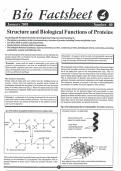Operant Conditioning
, Thorndike (1874 – 1949) – he was a behaviourist that left an animal to his own devices to see how it
learns.
Thorndike’s cats – he put a cat in a box to see how they learn to get out. They underwent
“accidental learning” in which they accidentally hit a lever and managed to get out. This produced a
learning curve in which the animal gradually learned how to get out of the box.
Thorndike’s Law of Effect
• rewarded responses are increased/stronger
• ignored/punished responses decrease or become weaker
Skinner developed upon Thorndike’s work. He previously thought behaviour was reflexive. He then
divided behaviour into two categories:
• Involuntary behaviour – pavlovian responses (see Classical Conditioning notes)
• Operant behaviour – behaviour controlled by consequences
He believed human behaviour could be shaped/maintained as combinations of operant behaviours.
Discussion on Skinner
Can reinforcement explain gambling?
• Most people gamble even if they think they don’t
Free will?
• Skinner believed that we don’t have free will
Language?
He believed that it is more scientifically accurate to describe something as its consequences rather
than internal events
Primary reinforcer – satisfies biological needs – food, drink, sex. Reinforce low probability
behaviour.
Secondary reinforcer – satisfies psychological/personal needs – money.
Premack principle - Reinforcers are a type of behaviour – all “high” probability. They reinforce low
probability behaviour.
If a person wanted to perform an activity, they will perform a less desirable activity to get a more
desirable one (a child is allowed to watch TV if they brush their teeth). The activity becomes the
reinforcer and enables reinforcement to be tailor made.
, Thorndike (1874 – 1949) – he was a behaviourist that left an animal to his own devices to see how it
learns.
Thorndike’s cats – he put a cat in a box to see how they learn to get out. They underwent
“accidental learning” in which they accidentally hit a lever and managed to get out. This produced a
learning curve in which the animal gradually learned how to get out of the box.
Thorndike’s Law of Effect
• rewarded responses are increased/stronger
• ignored/punished responses decrease or become weaker
Skinner developed upon Thorndike’s work. He previously thought behaviour was reflexive. He then
divided behaviour into two categories:
• Involuntary behaviour – pavlovian responses (see Classical Conditioning notes)
• Operant behaviour – behaviour controlled by consequences
He believed human behaviour could be shaped/maintained as combinations of operant behaviours.
Discussion on Skinner
Can reinforcement explain gambling?
• Most people gamble even if they think they don’t
Free will?
• Skinner believed that we don’t have free will
Language?
He believed that it is more scientifically accurate to describe something as its consequences rather
than internal events
Primary reinforcer – satisfies biological needs – food, drink, sex. Reinforce low probability
behaviour.
Secondary reinforcer – satisfies psychological/personal needs – money.
Premack principle - Reinforcers are a type of behaviour – all “high” probability. They reinforce low
probability behaviour.
If a person wanted to perform an activity, they will perform a less desirable activity to get a more
desirable one (a child is allowed to watch TV if they brush their teeth). The activity becomes the
reinforcer and enables reinforcement to be tailor made.










